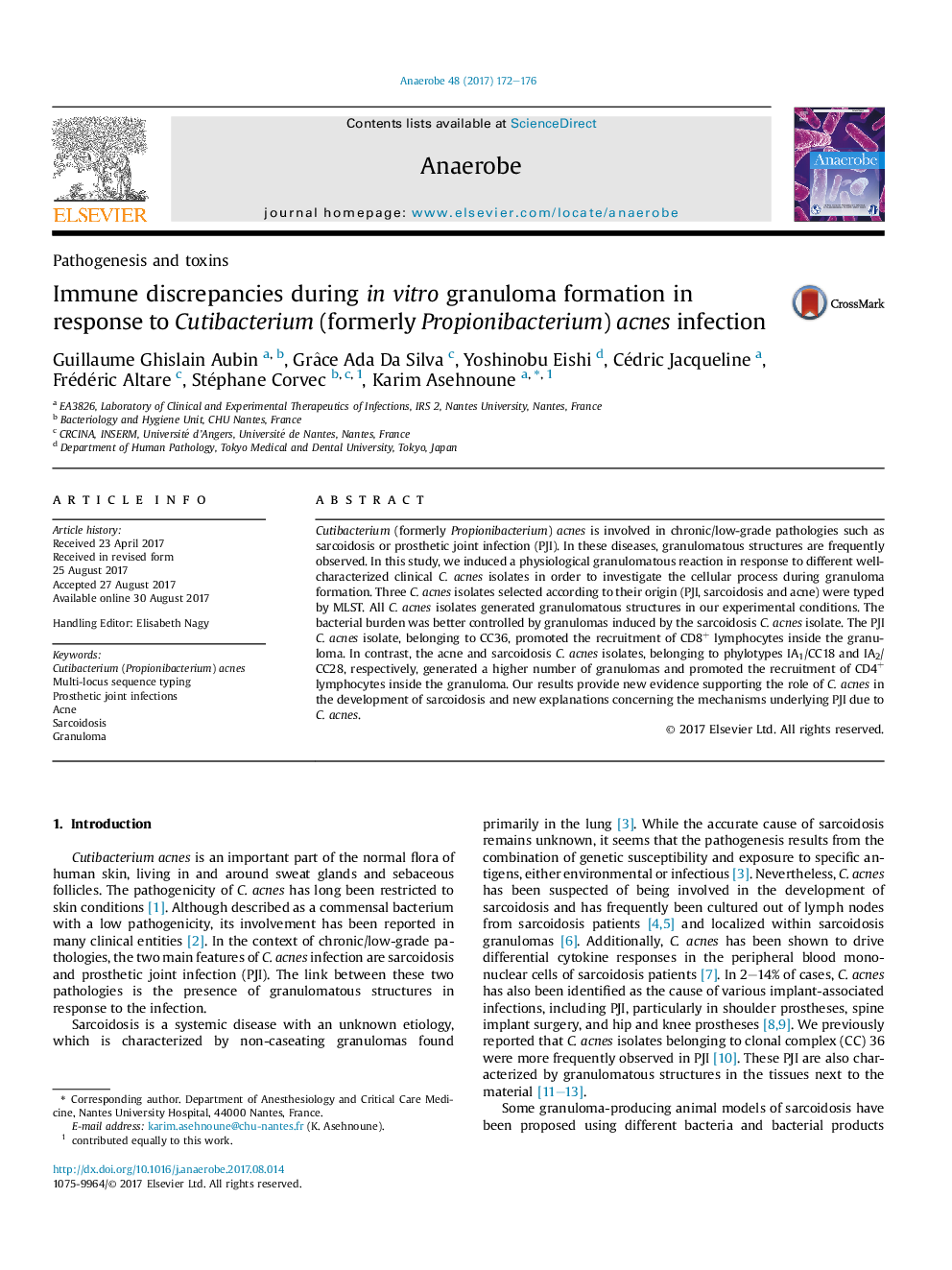| Article ID | Journal | Published Year | Pages | File Type |
|---|---|---|---|---|
| 5671362 | Anaerobe | 2017 | 5 Pages |
â¢We developed an in vitro granuloma model to study the immune response to C. acnes.â¢C. acnes isolated from PJI and belonging to CC36 promoted the recruitment of CD8+ lymphocytes inside the granuloma.â¢C. acnes isolated from acne and sarcoidosis lymph node generated a higher number of granuloma.â¢C. acnes belonging to CC18 and 28 promoted the recruitment of CD4+ lymphocytes inside the granuloma.
Cutibacterium (formerly Propionibacterium) acnes is involved in chronic/low-grade pathologies such as sarcoidosis or prosthetic joint infection (PJI). In these diseases, granulomatous structures are frequently observed. In this study, we induced a physiological granulomatous reaction in response to different well-characterized clinical C. acnes isolates in order to investigate the cellular process during granuloma formation. Three C. acnes isolates selected according to their origin (PJI, sarcoidosis and acne) were typed by MLST. All C. acnes isolates generated granulomatous structures in our experimental conditions. The bacterial burden was better controlled by granulomas induced by the sarcoidosis C. acnes isolate. The PJI C. acnes isolate, belonging to CC36, promoted the recruitment of CD8+ lymphocytes inside the granuloma. In contrast, the acne and sarcoidosis C. acnes isolates, belonging to phylotypes IA1/CC18 and IA2/CC28, respectively, generated a higher number of granulomas and promoted the recruitment of CD4+ lymphocytes inside the granuloma. Our results provide new evidence supporting the role of C. acnes in the development of sarcoidosis and new explanations concerning the mechanisms underlying PJI due to C. acnes.
